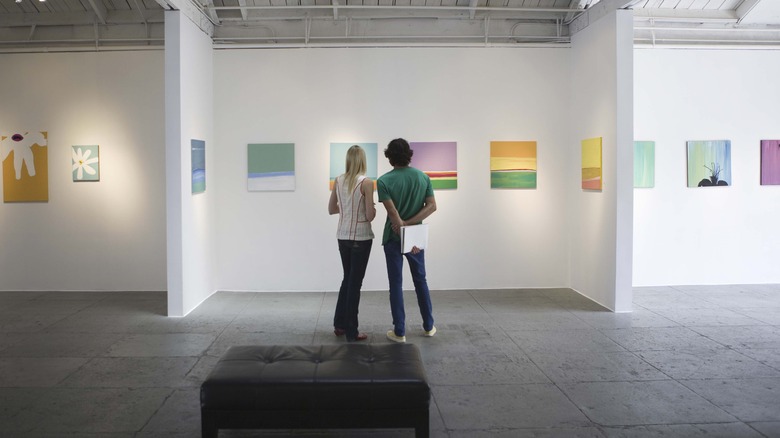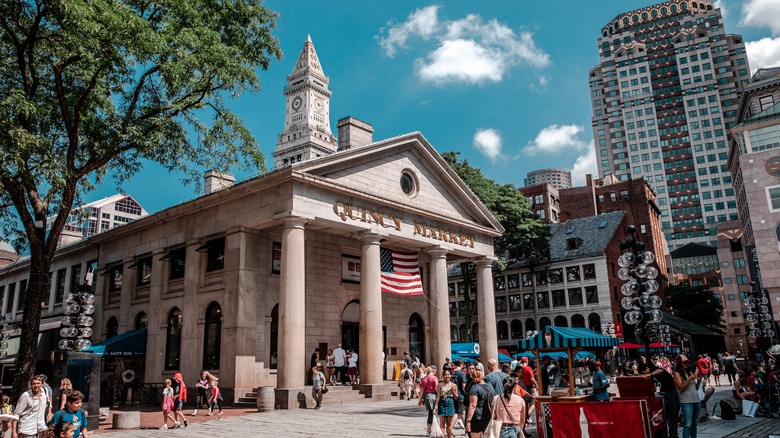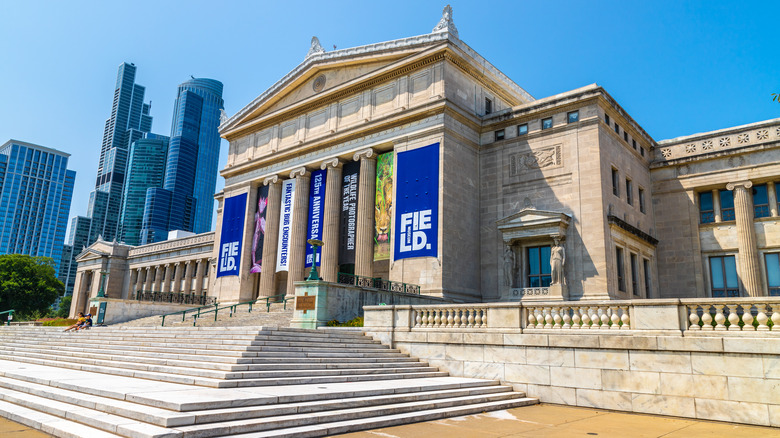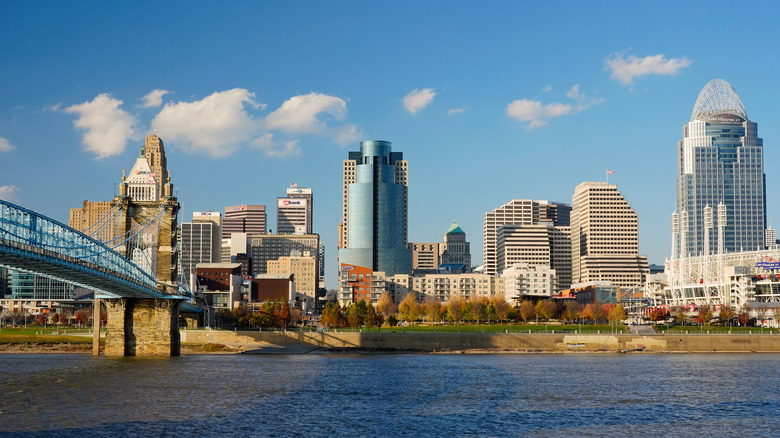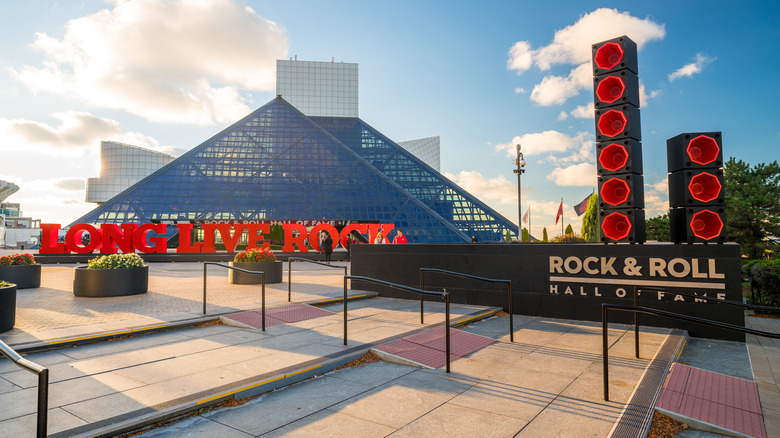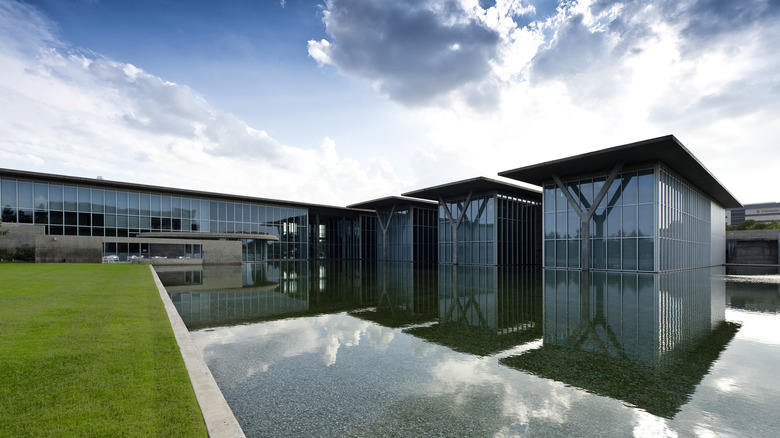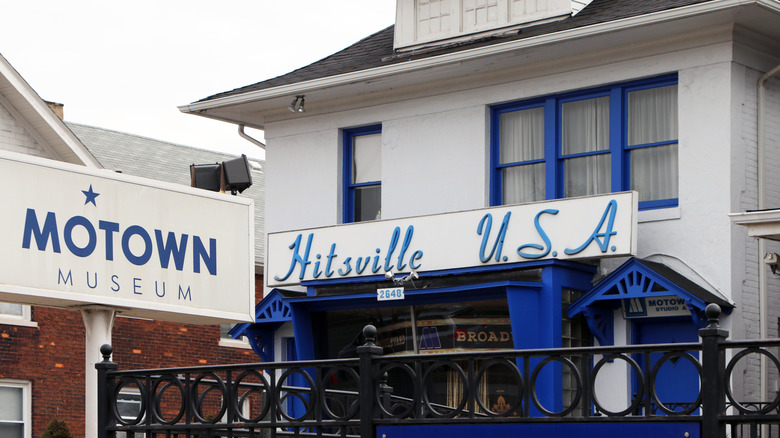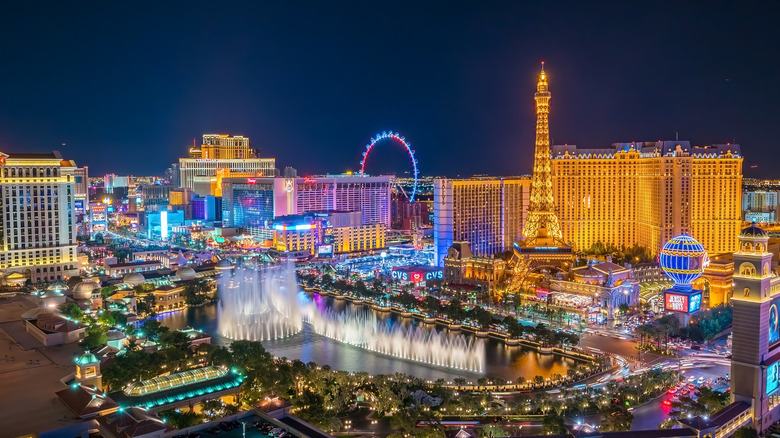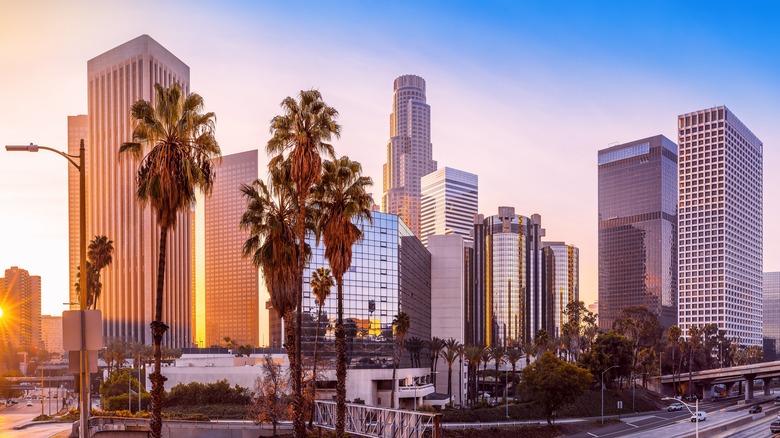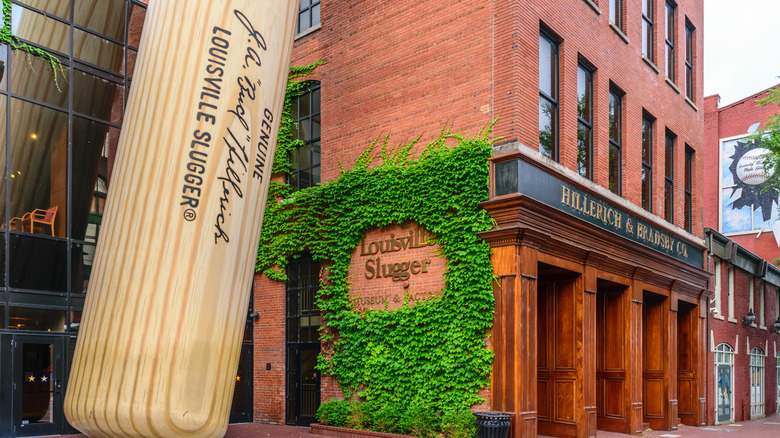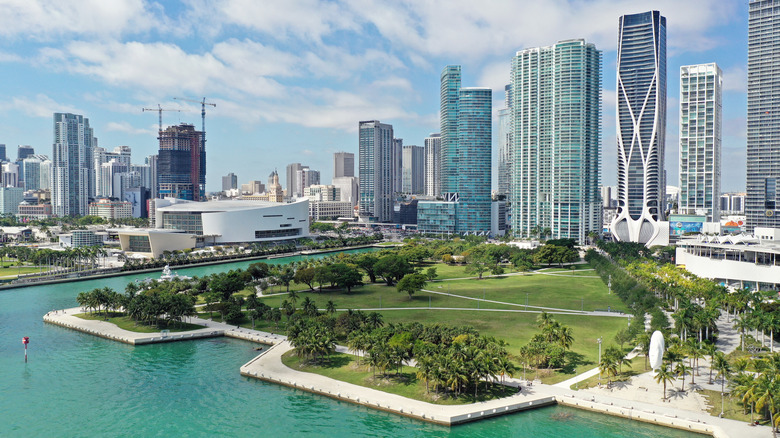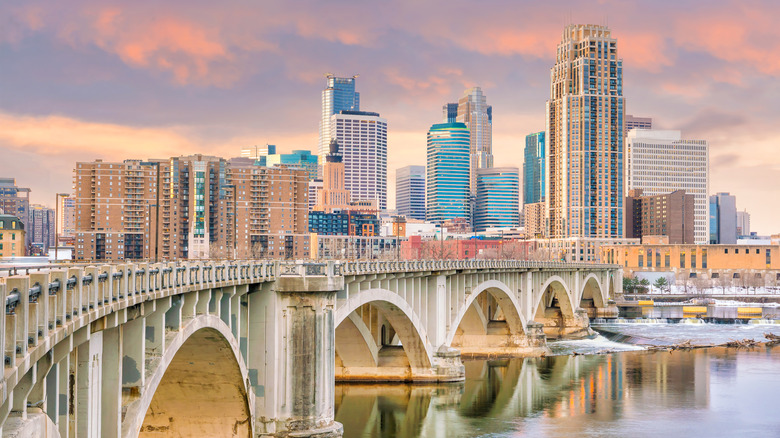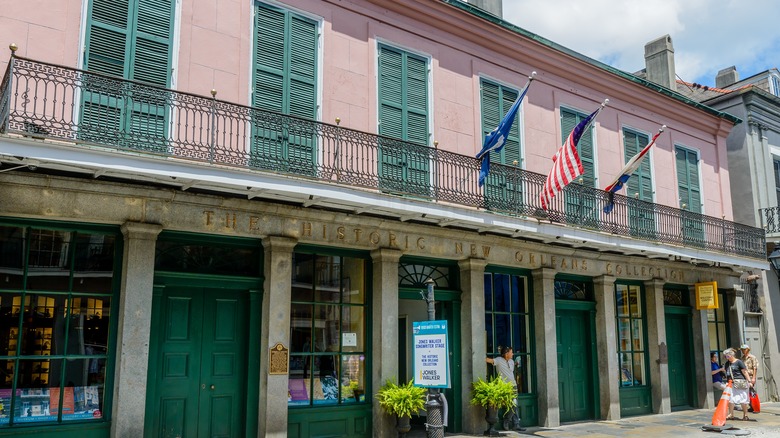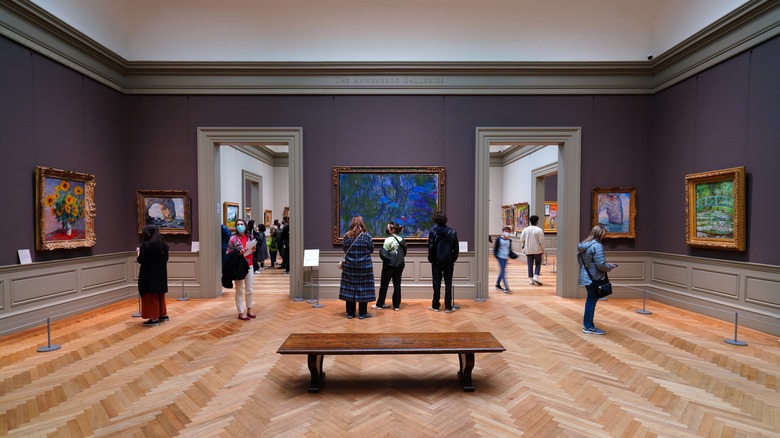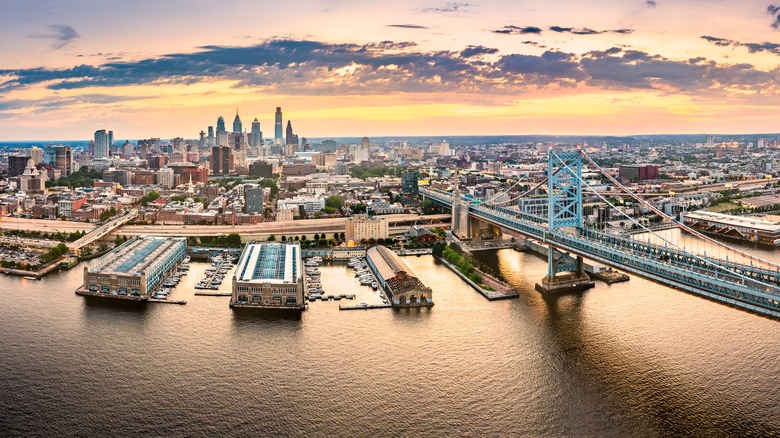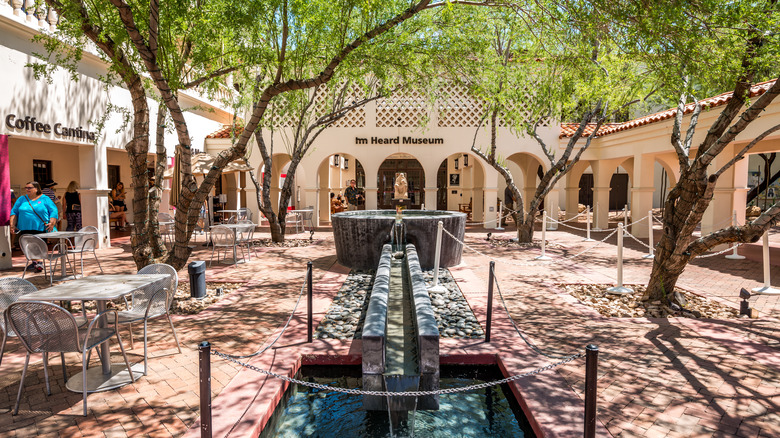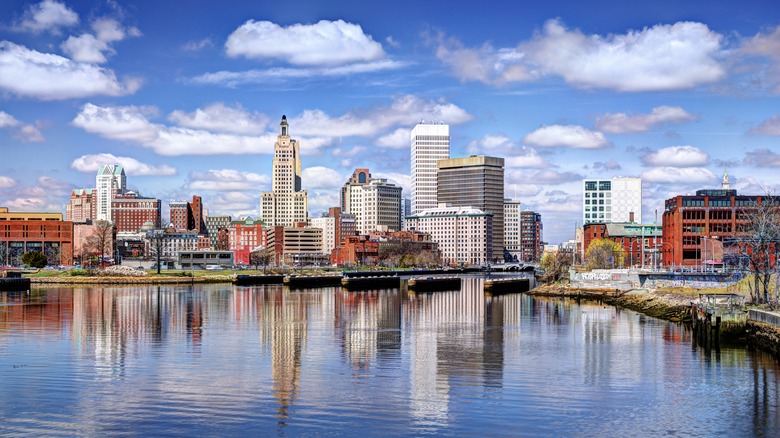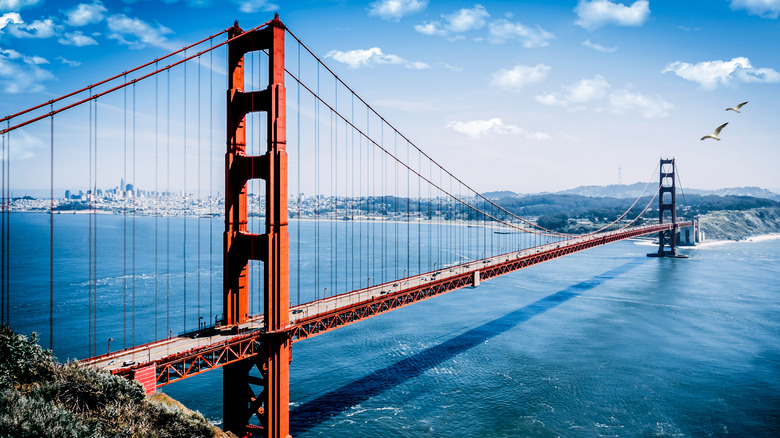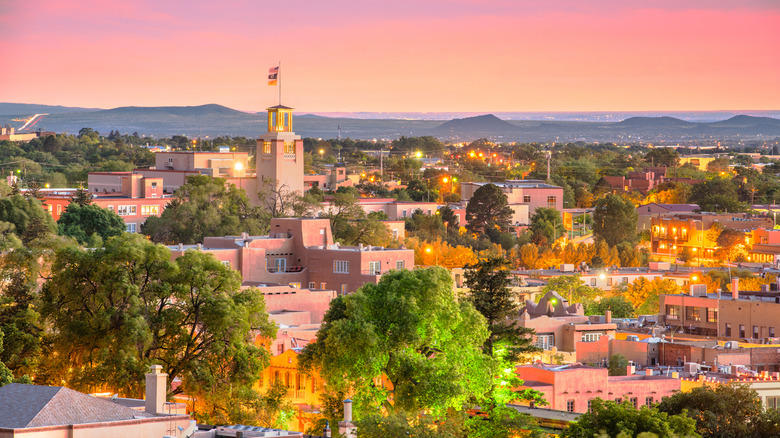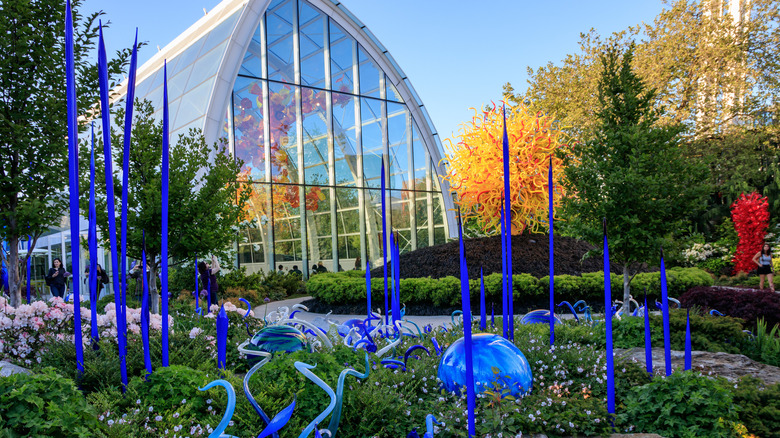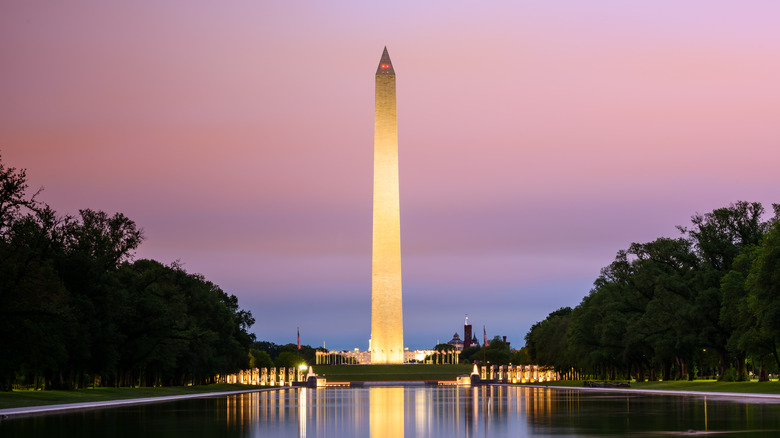Cities To Visit In The US With The Best Museums
Many centuries ago, the Greek word "mouseion" (which referred to a realm built for the Muses), described a place that honored deities. Sculptures were one of the methods of doing this, and that format, in a sense, formed a blueprint that gradually evolved over time to become what we today call museums. These repositories of items that celebrate something — nowadays, it tends to be a specific subject or genre, rather than celestial beings — are found the world over, some small and very focused, others sprawling and covering a wealth of topics.
Museums have become an integral part of life, serving an educational purpose and also playing a more important role, as an archive to record history and culture, a way for those in the present to connect to the past, and as a place where communities can unite. In the United States alone, there are, according to government estimates, about 35,000 museums, a bewildering array of places dedicated to such eclectic subjects as SPAM, the hammer, Egyptian antiquities, and much more. Given the rich vein of options, the choices are overwhelming, but a number of cities across the country stand out for their museum offerings. Below are the places worth visiting for a little bit of cultural enlightenment.
Boston
A big city with a range of interesting neighborhoods, and some of the country's most famous institutions of higher learning — Harvard, Massachusetts Institute of Technology, and Boston University — Boston has an eclectic mix of museums that draws locals and visitors alike. More than a century old (it was founded in 1913), the Boston Children's Museum engages youngsters of all ages in a number of ways, including an area where they can blow bubbles, clamber around a climbing frame that is three stories high, and explore a section that demystifies the concepts of science.
The Museum of Fine Arts Boston has a huge collection of 50,000 works, some centuries old, others more recently created. The New England Aquarium celebrates the city's waterfront setting, with a large tank that recreates the aquatic environment of the ocean and rises the height of four stories, while a special tank lets visitors touch a live ray. This is one place everyone in the family will love.
Chicago
Another aquarium is one of the main attractions of this city on Lake Michigan, where stunning architecture and pretty green spaces are all around. At the Shedd Aquarium, visitors of any age will marvel at some of the marine riches on view, with the chance to see sharks gliding through the water, Beluga whales wiggling about and exhibits that recreate a reef in the Caribbean.
Tracing its origins to 1879, the Art Institute of Chicago is a fabulous spot for art from around the world and from across eras, with exhibitions such as a retrospective on Salvador Dalí and ink drawings from 20th-century Hong Kong. The Field Museum celebrated its centenary in its current location in 2021, and it is sensitive to a vast array of topics, with subjects such as climate change, fossils, early humans, dinosaurs, and mammals coming under its purview. Fans of basketball and baseball won't miss the Chicago Sports Museum.
Cincinnati
Originally constructed as a house in the early 1800s, the Taft Museum of Art resides in a building as striking as its compact collection of artworks. It was home to a number of influential city residents, including politician Charles Phelps Taft and his heiress wife Anna Sinton, and the extended Taft family donated its vast art collection to the city. Now, this institution, earmarked as a National Landmark in 1976, has a rich collection that includes masters such as Rembrandt, Gainsborough, Goya, and Sargent.
Lovers of nostalgia will pore over the American Sign Museum, which celebrates more than a century of signs across America and the work that goes into making them, with a functioning neon workshop as part of the experience. The mother lode of museums in the city, the Cincinnati Art Museum traces more than 6,000 years of humans making things, and its collection numbers an impressive 67,000 pieces of art. The angular, blocky Contemporary Arts Center was designed by the late architect Zaha Hadid, and probes modern works in multiple media.
Cleveland
Housed in a building that resembles a pyramid lifted from the pages of a science-fiction novel, the Rock and Roll Hall of Fame will excite any lover of music, such is the breadth of offerings here. Extending over a number of floors, the museum is an ode to the joy and inventiveness of music, with exhibits that shuffle from stills to memorabilia to video to interactive booths. Musicians can jam with instruments in The Garage, while fans can study the gallery where people added to the Hall of Fame have had their signatures displayed.
Perhaps the most eye-popping spectacle is the recreation of Pink Floyd's "The Wall," which was used in a seminal performance in Berlin in 1990 (a time and place when the word "wall" carried extra significance). Elsewhere, visitors will also enjoy the Cleveland Museum of Art (with a stunning atrium), and the Cleveland Museum of Natural History.
Fort Worth
Architects Tadao Ando, Philip Johnson, and Louis I. Kahn are household names across the globe with rich bodies of work, but this city in Texas forges a link between the esteemed trio: All three designed museums in Fort Worth. Johnson's modernist Amon Carter Museum of American Art has works that date to the 18th century, as well as more contemporary pieces. The Kimbell Art Museum, drafted by Kahn, is an iconic structure that uses concrete and travertine in its swooping form, with vaulted rooflines, skylights that bring in streams of light, and interior courtyards that let the spaces breathe.
The minimalist Modern Art Museum, designed by Ando, seems to hover on top of the water, with five concrete sections sitting atop a vast pond, walls of glass blurring the separation between the interior and exterior. At night, the buildings almost look like lit lanterns floating on a lake. Visitors should also make the one-hour trip to Dallas to see the amazing Nasher Sculpture Center.
Detroit
The home of Motown Records, Detroit is the obvious choice to house a Motown Museum, and music fans flock here every year. With an exterior that looks like it belongs on a residential block, the museum gives visitors a first impression that is atypical of the usual experience. Exhibitions change, sometimes twice a year, but always trace the musical bravura behind this iconic label.
The city is also famous as the wellspring of the United States car industry, and the Henry Ford Museum of American Innovation looks at the symbolism of the automobile in the country, as well as advancements in flight, manufacturing, and rail. Detroit boasts a large Arab population, and the Arab American National Museum, the only one of its kind in the U.S., looks at the way Arab Americans have played a role in the prosperity and growth of the country, while also looking at the input of immigrants here in a larger context.
Las Vegas
We know what you're thinking — this city in Nevada is all flashy casinos, neon lights, and over-the-top showmanship. But there's much more to this desert oasis than the notorious bling. When the Bellagio opened in 1998, it ushered in a new level of sophistication among the city's casino resorts, with celebrity chef restaurants, its famous, iconic fountain, as well as the Bellagio Gallery of Fine Art. Exhibitions here constantly change, with a recent show presenting an eclectic mix of artists — Nick Cave, Ai Weiwei, Robert Mapplethorpe, and Alex Katz among them.
Perception Las Vegas uses different types of media and technology to create an immersive journey into a subject, with a recent display looking at the prolific genius of Leonardo da Vinci. A visit to the city necessitates a stop at the Mob Museum, which delves into the relentless battle between the honchos of organized crime and the enforcers of the law that strived to rein in their reach.
Los Angeles
The country's historical home of cinema, this city is where movie buffs, and even casual observers, can pore over the Academy Museum of Motion Pictures. The destination looks at the journey of film-making, and the method behind the madness of moviemakers. Visitors can even recreate the experience of winning an Oscar, and have the acceptance moment captured on video to take home.
The Getty Center has a varied domain, with a recent roster that included portraits from 18th-century European painters done in pastels, intricate vases that belonged to Louis XVI, and Asian art that dates to the 14th century. It's also a stunning place to visit, designed by Richard Meier, built of travertine, and offering breathtaking city views from its hilltop perch. A huge trove of artistic wealth, the Los Angeles County Museum of Art has a collection of almost 150,000 works, spanning thousands of years of artistry, and the scope of its exhibitions has a global reach.
Louisville
Born in 1942, Muhammed Ali is perhaps the most famous boxer to have lived, with a tongue as sharp and devastating as his jabs and hooks. His life is celebrated at the Muhammed Ali Center, a museum that looks at the trajectory of this fearless talent, with exhibits that are interactive, and an exploration of the principles that drove him to global fame and success. This city, of course, is also home to the famous baseball bat, the Louisville Slugger, and the Louisville Slugger Museum & Factory offers tours of the plant where the bats are made, has a huge storage vault filled with bats from floor-to-ceiling, and by the entrance, features a 120-feet, 68,000-pound bat (a great prop for a photo op).
A refined hotel brand that is dedicated to art also traces its origins to Louisville, and the original 21C Museum Hotel still welcomes guests here. A series of former tobacco and spirits warehouses were combined to create a home for the founders' impressive art collection and guest rooms from which to admire them, though non-guests can also visit.
Miami
What more needs to be said about the link between art and Miami than this: Art Basel holds four events around the world, but the only edition in the United States is at this Florida metropolis. For more regular programming, the Institute of Contemporary Art has shows year-round. As its name suggests, the focus is firmly on modern art, with works by emerging and local artists part of the institution's mission, exhibited both indoors, and outdoors in the sculpture garden.
Located on the waterfront, Pérez Art Museum Miami also has a sculpture garden, a permanent collection with a strong base in Latin, Caribbean, and African diaspora visual art, and also pulls in big-name artists like Yayoi Kusama and the Bulgarian luminary Christo. For some architectural travel, the Vizcaya Museum & Gardens transports visitors to continental Europe, with the intricate landscape extending across a number of themed sections.
Minneapolis
Fun fact — the metropolitan area of Minnesota's largest city boasts more than 50 museums. The upshot is that visitors to Minneapolis in search of some cultural enlightenment and entertainment will be spoiled for choice. Housed in a building that looks almost like a church, the Museum of Russian Art has grown, in two decades, from a handful of paintings to a collection that numbers in the thousands, burrowing into the various art forms of the Russian empire. This includes nesting eggs, propaganda-style posters, porcelain figures, folk toys, and even currency.
The shows at the Minneapolis Institute of Art are wildly varied, hence exhibits on bronze items used for rituals in Chinese cultures, as well as artistic representations of the night from across Africa. The imprint of American architect Frank Gehry is all over the Weisman Art Museum, with his distinctive curved steel facade making the building as striking outside as the exhibitions within.
New Orleans
Some of the museums in the city have a real sense of place, allowing visitors to get under the skin of the destination. Jazz is a musical form birthed in New Orleans — Louis Armstrong was born here — and fittingly its legacy is celebrated at the New Orleans Jazz Museum. Residing in a building that was once a U.S. Mint, the museum is in the heart of the French Quarter and uses performances, interactive booths and exhibits, and vibrant artwork to trace the evolution of this exciting musical genre.
Also truly representative of the uniqueness of this city, the Backstreet Cultural Museum began in a garage, and today is a rich collection of items that celebrate the traditions unique to N'Awlins — think Mardi Gras, jazz funerals, Baby Dolls, and more, with costumes, artifacts, and photographs galore. The beautiful main building and large sculpture garden at the New Orleans Museum of Art showcase works from America, Europe, Africa, and Asia.
New York
Where does one start in this city with some of the country's pre-eminent institutions? The Big Apple could conceivably be called the Big Artistic House, such is the scope and choice of museums here. At the Metropolitan Museum of Art, the Temple of Dendur is more than 2,000 years old, with carvings around it that recall the imagery of its surroundings at the time of construction. The Solomon R. Guggenheim Museum, designed by Frank Lloyd Wright, is as famed for its curved exterior and winding interiors as it is for its array of art.
Works by Joan Miró, Vincent Van Gogh, and Claude Monet are among the highlights of the Museum of Modern Art. The American Museum of Natural History, at the edge of Central Park, looks at everything from ancient human skeletons to the world's largest trees. And at the bottom of Manhattan, near a canyon of tall buildings, the Skyscraper Museum looks at the people, technical advancements, and developments in design that have propelled the rise of towering buildings. And yet, these museums only scratch the surface of what's here.
Philadelphia
The promise of the macabre lures entrants to the Mütter Museum, but this museum was started as an educational vessel for medical students, its genesis seeded by a gift of money and medical objects by Thomas Mütter, a surgeon who practiced in the 1800s. Today, more than 100,000 visitors come through the doors each year to look at pieces of human anatomy preserved in the pickling liquid, displayed in aged cabinets.
The steps up to the Philadelphia Museum of Art were made famous by the film "Rocky," and a statue of the cinematic boxing hero now sits here too, but the museum itself is worth checking out — after the obligatory run up the stairs, of course. The collection is global in scope, with pieces from America, Asia, and Europe. Don't miss the African American Museum in Philadelphia for exhibits that explore such hot-button topics as democracy, activism, and justice.
Phoenix
At this city in the Sonoran Desert, travelers can expect an eclectic mix of museums. The Heard Museum devotes itself to exploring and furthering the rich vein of artwork by Native Americans, both as a standalone subject and also in relation to art and culture on a wider scale. The museum even stages an annual Indian Fair, with thousands of collectors descending on Phoenix to purchase works directly from artists.
There's plenty to see and do at the Phoenix Art Museum, and such variety, meaning you might see pieces on Indian temples, Japanese folk art, and a look at American fashion designers. Numerous galleries at the Musical Instruments Museum uncover the workmanship and beauty of instruments from around the globe — there are more than 5,000 instruments displayed across its spaces. Speed hounds will prize the objects, cars, trophies, and other items showcased at the Penske Racing Museum, including cars that won the Indy 500.
Providence
Arguably the premier design school in the country, the Rhode Island School of Design (RISD) has its own museum. The museum first opened in the 1870s, and today boasts a collection of 100,000 works, some modern, some stretching back millennia, and spanning mediums. Visitors will find sculptures, canvases, clothing and textiles, craft works, and even furniture from close to home and much further afield. You might see a show on the various way silver is used to make jewelry, or how nature was represented in art across thousands of years in Asia, the Americas, and Europe.
The Lippitt House Museum is a trip into the past, a former private residence built in the 1860s, and filled with Victorian details and design. Parents can keep the kids entertained — and quiet — with playtime at the Providence Children's Museum, as well as at the Museum of Natural History and Planetarium, which first opened more than a century ago.
San Francisco
The astonishing Asian Art Museum traces thousands of years of artistic expression in the world's most populous continent. The topics extend over the huge subject matter and might include a treatise on dance in South Asia that looks back thousands of years, or nature scenes from eastern Asia, or even works by a Chinese-American painter born in San Francisco's Chinatown. The scope of items on display here is mind-boggling. Less than two decades old, the Museum of Craft and Design presents inspiring work done by artists and designers that focus on the genre of crafts.
Contemporary works are on show at the San Francisco Museum of Modern Art, with pieces by Bay Area artists vying for visitors' attention alongside legends like Paul Klee and Alexander Calder. The California Academy of Sciences brings to life a number of environments in its pursuit of scientific enlightenment — travelers will find a rainforest, aquatic exhibitions, a planetarium, and a museum that shadows the evolution of natural history.
Santa Fe
An American artist that lived for many years near Santa Fe, Georgia O'Keeffe is beloved by many art lovers, especially for her evocative, sensual portrayals of New Mexico's landscape. A visit to this city necessitates a stop at the Georgia O'Keeffe Museum. Opened 11 years after she died in 1986, the museum is the most comprehensive look at her work available, with a collection that includes 140 of her oil paintings and hundreds of her drawings and other works. Thankfully, it's not the only option in town.
The Museum of Indian Arts and Culture, located inside an adobe building, looks at the native cultures in this part of the country through the lens of art. Over at the Museum of International Folk Art, you might see ghoulish masks from Japan, cardboard sculptures from Mexico, or the hypnotic exhibit "Multiple Visions: A Common Bond," where scenes from more than 100 countries are recreated in small-scale tableaus.
Seattle
Dale Chihuly was born in nearby Tacoma and lives in Seattle, and his intricate, ornate works of fragile art can be found in hotels, public spaces, and private homes all over the world. The most in-depth body of his oeuvre might just exist at the Chihuly Garden and Glass, conveniently placed, for tourists at least, by the Space Needle. This fantasy land of otherworldly, bright, twisting glass sculptures divides its realm between galleries, a glasshouse where the central, defining piece appears like a long, flowery lantern, and a garden where natural plantings mingle with slashes of glass art.
With a coastal location, Seattle has a deep connection to the water, and the Center for Wooden Boats taps into that link. Small boats made of wood are the primary focus here, explored through exhibits, workshops, educational sessions, and the chance to watch boats be restored. The Seattle Art Museum has three locations — the eponymous main museum, the Seattle Asian Art Museum, and the Olympic Sculpture Park — each of which promises a wealth of artistic beauty.
Washington, D.C.
The list of museums to visit here is endless, many of them close to the National Mall in the heart of the city. The Smithsonian Institution is the greatest progenitor of museums in the nation's capital, with most of them free to entry. It's the force behind the Air and Space Museum, the Natural History Museum, the American Indian Museum, the Portrait Gallery, the Sackler Gallery, the Arts and Industries Building, the Postal Museum, the African American Museum, the National Zoo, and more.
The National Building Museum studies the process behind making a building, from the architectural prints to the finished product. Appropriately, its home is a stunning structure, the former Pension Building where the mammoth main hall is interspersed with towering columns. Global names like Picasso and Braque mix with local artists at the Kreeger Museum, a compelling building designed by Philip Johnson and Richard Foster.
